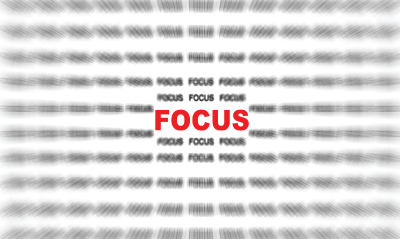
Diabetes and retinopathy?
Posted on January 18, 2018 with 0 comments
Diabetic retinopathy is a progressive damage to the blood vessels of the retina (light sensing lining at the back of eye) due to high blood sugar levels. Overtime, high sugar levels weaken and damage the blood vessels leading to swelling of the retinal tissue. This gives rise to cloudy or blurred vision. Longer the duration of the diabetes, higher are the chances of developing retinopathy.
The disease might affect both the eyes and if left untreated, might even lead to blindness. Thus, all patients with diabetes must undergo a dilated eye examination at least once every year to check for diabetic retinopathy.1
Risk factors
- Diabetes: During the first twenty years of uncontrolled diabetes, almost all (~100%) type 1 diabetics and many type 2 diabetics (>60%) are prone to develop the disease
- Medical conditions: High blood pressure, high cholesterol (triglycerides) in the blood, tobacco use have higher chances of developing retinopathy
- Pregnancy: Pregnant female are at higher risk of developing diabetic retinopathy, especially if she develops diabetes during her pregnancy.1,2
Complications
- Vitreous hemorrhage: Bleeding of the involved blood vessels into the eye may lead to few dark spots (floaters); usually resolves with proper diabetes control
- Retinal detachment: The retina may get detached from the back of the eye leading to spots, flashes in your vision, or even loss of vision
- Glaucoma: Increase in pressure inside the eyeball
- Blindness: Eventually, uncontrolled diabetes along with glaucoma may lead to blindness.
Symptoms
The early stages of this disease may usually occur without any pain or symptoms. The symptoms become noticeable only after the advancement of the disease. Hence, it is important to look for the typical symptoms of retinopathy:
- Spots or dark strings floating in your vision (floaters/spots)
- Sudden changes in vision/double vision or blurred vision
- Impaired color vision
- Dark or empty areas in your vision
- Vision loss
- Eye pain
Both the eyes might be affected and it is important to contact your doctor right away if there is any change in your vision.
Diagnosis
A comprehensive eye examination would include checking of the retina after proper pupilar dilatation of the eye, such as:
- Visual acuity testing: person’s ability to see at various distances
- Tonometry: pressure inside the eye
- B-scan ultrasonography: ultrasonography of the eyeball
- Optical Coherence Tomography (OCT): similar to ultrasonography but using sound waves
- Fluorescein angiogram: checking the blood vessels by injecting a dye into your bloodstream.
Treatment
The treatment of diabetic retinopathy is usually surgery. However, nowadays certain drug therapy is also available.
- Early non-proliferative diabetic retinopathy:
Does not warrant treatment right away. A good control over the blood sugar level ensures slow progression of the disease
- Advanced proliferative diabetic retinopathy:
Treatment depends on the specific problems with your retina, options include:
- Anti-VEGF injection: Drugs are injected into the eye to prevent abnormal blood vessel growth. This has been approved for treating edema of the macula (part of the retina) but can also be used to treat diabetic retinopathy. However, they are very expensive.
- Focal/Scatter/Grid laser treatment: This can stop or slow the leakage of blood and fluid in the eye and can be performed by the doctor at his/her clinic.
- Vitrectomy: Involves a tiny cut into your eye to remove blood as well as a part of the scar tissue from the retina. This needs to be done in a surgical set-up using local or general anesthesia.
Surgery usually stops or slows the progression of the disease and the disease might recur in future. Thus, it makes more sense to prevent the occurrence of the disease by following certain recommendations.
Recommendations or safety measures:
- Control diabetes: Monitor your blood sugar levels and take medications as directed by your doctor. Perform some physical activity to keep diabetes at bay.
- Get a glycosylated hemoglobin test: The glycosylated hemoglobin test (HbA1C) reflects your average blood sugar level, 3 months prior to the test. Maintaining a normal (<7) HbA1C level would indicate lesser chances of developing retinopathy
- Control blood pressure and cholesterol levels: Your Blood pressure and cholesterol lowering medicine along with healthy diet and exercise will control the risk factors for retinopathy
- Restrict smoking: Smoking, being one of the important risk factors for retinopathy, should be restricted if not stopped completely
- Keep a track on the vision changes: Type 1 diabetes patients must have an initial comprehensive eye examination within 5 years after the onset of diabetes; whereas type 2 patients should have the examination shortly after diagnosis. If retinopathy is detected, the follow-up should be done every year, otherwise routine examination after every two years is recommended.
References
- American Optometric Association: Diabetic retinopathy. (2017). Available from: https://www.aoa.org/patients-and-public/eye-and-vision-problems/glossary-of-eye-and-vision-conditions/diabetic-retinopathy. Last accessed: 12.12.2017
- Fong D.S., Aiello L., Gardner T.W., King G.L., Blankenship G., Cavallerano J.D. et al. (2004). Retinopathy in Diabetes. Diabetes Care. 27(Supplement 1). pp. S84-S87.
- Standards of Medical Care in Diabetes – 2015. (2015). Retinopathy. Diabetes Care. 38(Supplement 1). pp. S60-S62.
- National Eye Institute: Facts about Diabetic Eye Disease. (2015). Available from: https://nei.nih.gov/health/diabetic/retinopathy. Last accessed: 12.12.2017